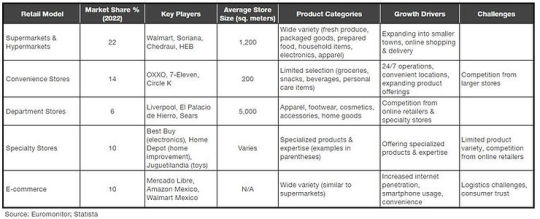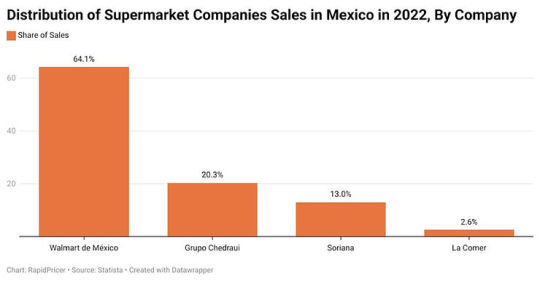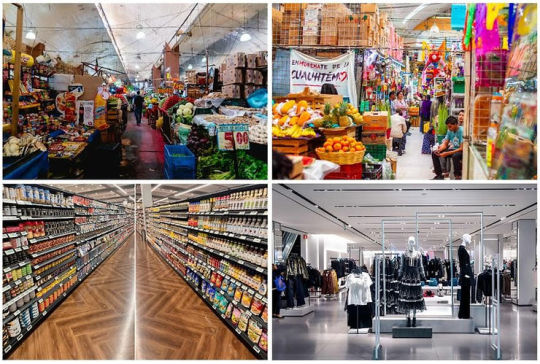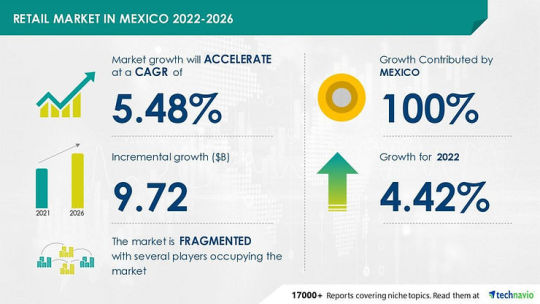#SupplyChainChallenges
Explore tagged Tumblr posts
Text

Challenges in CSMS (Cold Storage Management System) :
Fluctuating Demands 📉📈
Inaccurate Inventory Tracking 📦❌
Obsolete and Excess Inventory 🗑️
Poor Space Utilization 🏢
Technology Adoption 💻🔧
For more information, visit https://www.omexcsms.com
#ColdStorageManagement#CSMS#InventoryTracking#SpaceUtilization#TechnologyAdoption#SupplyChainChallenges#InventoryManagement#ColdStorageSolutions#Logistics#Warehousing#TechInnovation#SupplyChainOptimization#ColdStorageSystem
1 note
·
View note
Text
Key Challenges Freight Forwarders Will Face in 2025
As the logistics landscape continues to evolve at a breakneck pace freight forwarders find themselves at the epicenter of global trade’s complexities. The year 2025 promises both unprecedented opportunities and formidable challenges for those steering the world’s supply chains With emerging technologies regulatory changes and economic uncertainties shaping the future freight forwarders must remain agile and innovative to stay ahead of the curve. In this blog we’ll delve into the key challenges freight forwarders are set to face in 2025 and explore how they can adapt to thrive in a rapidly shifting environment
READ MORE:
https://www.conquerornetwork.com/blog/2025/01/08/key-challenges-freight-forwarders-will-face-in-2025/

0 notes
Text
Radiopharmaceuticals in Nuclear Medicine Market driven by Rising Prevalence of Cardiovascular and Oncological Diseases

The Global Radiopharmaceuticals in Nuclear Medicine Market is estimated to be valued at US$ 7.10 Bn in 2024 and is expected to exhibit a CAGR of 8.5% over the forecast period 2024 to 2031. Radiopharmaceuticals in Nuclear Medicine Market Growth is prevalence of cancer and cardiac diseases has increased the demand for early diagnostics using nuclear medicine techniques. Radiopharmaceuticals provide non-invasive disease characterization and targeted molecular imaging. This has boosted their use in diagnosis and treatment monitoring. Get more insights on, Radiopharmaceuticals in Nuclear Medicine Market
#CoherentMarketInsights#Increasinggeriatricpopulation#Stringentregulatoryframeworks#Supplychainchallenges#Growingapplicationsintheragnostics
0 notes
Text

QuickShift offers fast, accurate, and tech-enabled fulfillment solutions to keep your eCommerce brand thriving. From real-time tracking to optimized inventory management, we ensure superior customer service and repeat business.
Ready to revolutionize your supply chain? Get a free consultation today! https://www.quickshift.in/solutions/fulfillment/ecommerce-fulfillment-services-india
#QuickShift#FulfillmentSolution#Ecommerce#Logistics#HappyCustomers#ecommercefulfillment#fulfillmentservices#warehousing#supplychainsolutions#supplychainoptimization#supplychainmanagement#supplychainchallenges#supplychainmanagment#supplychainlogistics#supplychain
0 notes
Text
Unlocking the Potential of Supply Chain Analytics: Navigating Complexity with Data-Driven Insights
Originally Published on: SpendEdge |Understanding Supply Chain Analytics: A Simple Overview
Unlocking the Potential of Supply Chain Analytics: Navigating Complexity with Data-Driven Insights
In today’s rapidly evolving business landscape, companies encounter a myriad of challenges, ranging from economic uncertainties to supply chain disruptions. Amidst such turbulence, the significance of real-time data access and comprehensive supply chain visibility cannot be overstated. However, despite the recognized potential of big data analytics to revolutionize supply chain management, many organizations struggle to fully leverage its capabilities. Hindered by limited capabilities and unstructured processes, they often miss out on the transformative opportunities presented by big data. In this inaugural part of our article series, we delve into the barriers hindering companies from embracing big data in their supply chains and explore how a systematic approach can unlock its vast potential. Join us as we unravel the intricacies of data-driven methodologies and showcase how forward-thinking organizations integrate them into their operations to navigate today’s unpredictable business landscape with confidence and agility.
#SupplyChainAnalytics #DataInsights
Exploring Supply Chain Analytics
Supply chain analytics emerges as a game-changer in today’s intricate business environment, leveraging data to optimize performance and drive strategic decisions. By harnessing analytics, organizations can enhance efficiency, reduce costs, and gain a competitive edge. But what exactly does supply chain analytics entail, and how does it revolutionize traditional supply chain management?
Supply chain analytics transcends mere data analysis; it involves uncovering hidden patterns and trends within extensive datasets to enhance operations. From descriptive analytics providing a snapshot of current performance to predictive analytics forecasting future outcomes, and prescriptive analytics recommending actionable strategies, this multifaceted approach empowers organizations to proactively tackle challenges and capitalize on opportunities.
Enter big supply chain analytics, a paradigm shift expanding analysis beyond conventional internal data sources. By incorporating cognitive analytics and advanced statistical methods, organizations gain deeper insights into their supply chains, from frontline operations to strategic decisions. This evolution in analytics isn't just about gathering more data; it's about extracting meaningful insights to drive continuous improvement and innovation.
#BigDataInsights #ContinuousImprovement
Navigating Challenges and Opportunities in Supply Chain Analytics
In today’s ever-evolving supply chain management landscape, the demand for effective supply chain analytics has never been greater. As global supply chains grow increasingly complex, organizations must leverage analytics to navigate disruptions and optimize supply shaping. From identifying bottlenecks to mitigating risks, analytics platforms equipped with augmented analytics capabilities empower organizations to stay ahead of the curve.
However, the journey towards achieving world-class supply chain analytics is fraught with challenges. Organizations must overcome obstacles such as data silos, integration issues, and legacy systems to unlock the full potential of analytics. By embracing a systematic approach and investing in predictive analytic software, organizations can pave the way for transformative change.
In the forthcoming installment of this series, we’ll delve deeper into the evolution of supply chain analytics and examine real-world examples of organizations leveraging its power to drive innovation and attain operational excellence. Join us as we unravel the complexities of supply chain analysis and uncover the secrets to building a resilient and agile supply chain in today’s dynamic business environment.
Contact us.
0 notes
Text
what is working?
what is not working?
how do you feel the project is coming?
what are you learning about running a business?
what are you learning about yourself?
1. What is working for Naija Shoppers?
I have been putting my heart and soul into providing personalized service, and it's paying off, seeing my customers feel valued and supporting Naija Shoppers means the world to me.
The products I have carefully handpicked are really hitting the spot, it’s such a joy to see my customers coming back for more and telling their friends about their favourite finds from Naija Shoppers.
2. What is not working for Naija Shoppers?
I have hit a few bumps in the road with my supply chain. Sometimes, getting the products my customers love takes longer than I'd like, but I'm determined to find solutions and keep things moving smoothly.
My online ads haven't quite hit the mark yet. It's been a learning curve, but I'm not giving up. I'm experimenting and tweaking my strategies to better connect with my audience.
3. how do you feel the project is coming?
I'm feeling pretty good, Despite the challenges, I'm seeing growth and feeling the support from my amazing customers. It's a journey I'm proud to be on.
Sure, there's still work to be done, but I'm excited about what the future holds for Naija Shoppers. It's a passion project that's close to my heart, and I'm determined to see it succeed.
4. What am I learning about running a business?
Flexibility is key, I'm learning to adapt and roll with the punches as I navigate the ups and downs of running Naija Shoppers.
Building relationships is everything. I'm discovering the power of connecting with my suppliers and customers on a personal level it's what sets Naija Shoppers apart.
Marketing is a whole new world, I'm learning as I go, trying different approaches and finding out what works best for Naija Shoppers.
5. What am I learning about myself as I run my business?
I'm discovering just how resilient. Every challenge I face only makes me more determined to succeed with Naija Shoppers.
I'm finding my own unique leadership style. Leading Naija Shoppers has taught me to trust my instincts and embrace my strengths.
Above all, I'm learning that the journey of running Naija Shoppers is not just about business it's about personal growth and making a positive impact on the world around me.
#NaijaShoppersUpdate#SmallBusinessJourney#PersonalizedService#ProductSelection#SupplyChainChallenges#MarketingStrategies#BusinessGrowth#Resilience#CanadianEntrepreneur#CustomerAppreciation#logistics
0 notes
Text
#SupplyChainDisruptions#SupplyChainChallenges#ProductionDelays#SupplyChainResilience#GlobalSupplyChain
0 notes
Text
Breaking News: Tesla Increases Model 3 and Model Y Prices in the US Due to Supply Chain Challenges | Tesla | EVNews | PriceHike | Model3 | ModelY | SupplyChainChallenges | ElectricVehicles | TeslaNews | USMarket | AutomotiveIndustry | Sustainability|
Tesla has announced price hikes for its Model 3 and Model Y vehicles in the US, citing supply chain challenges as the reason for the increase. The new prices came into effect on 19 April 2023, with the Model 3 Standard Range Plus now starting at $45,000, up from $42,190, while the Model Y Long Range starts at $54,000, up from $51,190. The prices of other versions of these vehicles have also…

View On WordPress
#AutomotiveIndustry#ElectricVehicles#EVNews#Model3#ModelY#PriceHike#SupplyChainChallenges#Sustainability#Tesla#TeslaNews#USMarket
0 notes
Text
From Virtual Reality to Contactless Checkout, the latest Tech Trends for Retailers - Red Maple
The last couple of years have been a major test for the retail industry. The COVID-19 pandemic created unprecedented challenges for retailers, forcing millions of shoppers to turn to online channels to make their purchases. This resulted in a record number of online shoppers, which continued to grow throughout 2021 and into this year. Despite the various challenges the industry is facing, including supply chain disruptions, labor shortages, cybersecurity threats, and inflation, ecommerce has continued to thrive.
0 notes
Photo

Leveraging Low-Code to Solve Supply Chain Challenges in 2023 A supply chain is a complex process that poses several challenges to its efficient management. That’s why companies are turning to low-code to overcome these challenges and infuse agility and resilience, into their supply chain management. Low-code can help you build supply chain applications easily, quickly, and affordably. Reach us today to explore how we can help you manage your supply chain efficiently with low-code! https://omnepresent.com/blogs/leveraging-low-code-to-solve-supply-chain-challenges-in-2023/
#supplychain#supplychainchallenges#Low Code Development#LowCode#Low Code No Code#low code technology
0 notes
Text
Dynamic Shifts in Retail Formats: Meeting Growing Demands Over Time in Mexico
Written By: Gargi Sarma

Introduction:
Mexico has a thriving and varied retail scene that includes both classic and modern formats to meet the wide range of needs of the nation's customers. Mexican consumers have access to a diverse range of shopping experiences, ranging from vibrant markets and corner stores to expansive supermarkets and virtual marketplaces.

Figure 1: Market Share of Retail Models in Mexico (2022)
The changing nature of consumer needs is a notable feature of Mexico's retail industry. The shifting demographics, urbanization, and technological improvements driving the economy also drive changes in Mexican consumers' preferences and behaviors. Customers expect quality, variety, price, and convenience, which forces businesses to constantly innovate and adjust in response to these changing needs.
This article delves into the intriguing transformations taking place in the Mexican retail scene, specifically emphasizing the adjustments made to shop structures. We examine the shift from conventional storefronts to more contemporary spaces, examining the forces behind this change and its effects on shops and customers. We can obtain important insights into the changing retail dynamics influencing the Mexican market by looking at the dynamic interaction between customer needs and store formats.
Overview of Retail Formats in Mexico:

Figure 2: Modern Retail Models in Mexico
Growing Demands Driving Changes:
Key trends:
Rising disposable income: Increased spending power fuels demand for diverse and higher-quality products.
Urbanization: Growing urban population seeks convenience and a wider product range, driving demand for modern formats.
Technological adoption: Increased internet & smartphone usage influences online shopping and omnichannel experiences.
Changing values: Growing awareness of sustainability and health, impacting product choices and shopping preferences.
Experience: Desire for personalized, convenient, and engaging shopping experiences.
Retail Format Shifts:
Driving factors:
Urbanization: Demand for smaller, accessible formats like convenience stores and proximity retail.
Rising income: Growth of supermarkets, hypermarkets, and specialty stores offering wider product variety.
Globalization: Entry of international retailers and brands influencing format trends and competition.
E-commerce boom: Rapid growth of online shopping platforms like Mercado Libre and Amazon Mexico.
Changing consumer preferences: Shift towards convenience, experience, and omnichannel shopping journeys.
Case Studies:
OXXO: Convenience store chain adapting to changing demands by expanding product offerings, introducing digital services, and partnering with delivery platforms.
HEB supermarkets: Targeting premium grocery segment with a focus on fresh produce, prepared meals, and online ordering.
Liverpool department store: Launching omnichannel initiatives, integrating online and offline shopping experiences.
Mercado Libre e-commerce platform: Expanding physical presence with pickup points and partnering with traditional retailers.

Figure 3: Distribution of Supermarket Companies Sales in Mexico in 2022, By Company
In 2022, the Mexican business of Walmart de México y Centroamérica accounted for 64.1% of total supermarket sales. The business made 813.06 billion Mexican pesos in net revenues in 2022 (Figure 4).
Evolution Over Time:


Figure 5: Comparison of Traditional and Modern Retail Landscapes in Mexico
Adaptation and Innovation:
Key adaptation strategies:
Omnichannel integration: Connecting online and offline experiences through click-and-collect, mobile apps, and personalized promotions.
Enhanced convenience: Expanding delivery options, self-checkout systems, and mobile payment solutions.
Data-driven insights: Utilizing customer data to personalize offers, optimize inventory, and predict trends.
Focus on experience: Creating engaging shopping environments, offering loyalty programs, and hosting events.
Sustainable practices: Implementing eco-friendly packaging, reducing waste, and sourcing responsibly.
Case Studies:
OXXO convenience stores: Partnering with delivery platforms, expanding payment options, and offering localized product selections.
Walmart Mexico: Launching "Super Willys" smaller format stores, investing in mobile payments, and expanding online grocery delivery.
Liverpool department store: Integrating virtual fitting rooms, offering personalized styling consultations, and partnering with local designers.
Farmacias del Ahorro pharmacy chain: Utilizing AI to optimize logistics and inventory management, and offering telemedicine services.
Challenges and Opportunities:
Challenges: Mexican retailers encounter infrastructure constraints, such as insufficient transportation and logistics systems, which may impede the effectiveness of their supply chains. Retailers face additional challenges in navigating the market from regulatory constraints such as complicated licensing procedures and taxation policies.

Figure 6: Retail Market in Mexico, 2022 - 2023 (Source: Technavio)
According to Technavio, between 2021 and 2026, the retail market in Mexico has the potential to increase by USD 9.72 billion.
Conclusion:
Technological developments, shifting consumer preferences, and socioeconomic transformations are all causing dynamic changes in Mexico's retail environment. The retail industry in Mexico shows a wide range of structures meeting the different needs of customers, from conventional markets and family-owned stores to contemporary supermarkets and e-commerce platforms. Retailers can innovate and adapt despite ongoing problems like infrastructure restrictions and regulatory obstacles. Retailers can overcome these obstacles and take advantage of Mexico's expanding market potential by utilizing technological advancements, adopting omnichannel strategies, and placing a high priority on the consumer. Proactive adjustment and calculated innovation will be essential for the retail sector to prosper in this changing and cutthroat environment as it continues to change.
About RapidPricer
RapidPricer helps automate pricing and promotions for retailers. The company has capabilities in retail pricing, artificial intelligence, and deep learning to compute merchandising actions for real-time execution in a retail environment.
Contact info:
Website: https://www.rapidpricer.com/
LinkedIn: https://www.linkedin.com/company/rapidpricer/
Email: [email protected]
#retailtransformation hashtag#mexicanretail hashtag#retailinnovation hashtag#consumertrends hashtag#urbanizationimpact hashtag#technologicaladvancements hashtag#omnichannelexperience hashtag#economicgrowth hashtag#sustainableretail hashtag#customerexperience hashtag#markettrends hashtag#retailevolution hashtag#convenienceshopping hashtag#supermarkettrends hashtag#ecommerceboom hashtag#digitaltransformation hashtag#dataanalytics hashtag#customerinsights hashtag#supplychainchallenges hashtag#regulatoryenvironment hashtag#infrastructureconstraints hashtag#marketopportunities hashtag#retailtech hashtag#dynamicShifts hashtag#adaptationstrategies hashtag#businessinnovation hashtag#retailgrowth hashtag#mexicaneconomy hashtag#marketexpansion hashtag#retailsolutions
0 notes
Photo

#iso28000 #supplychain #businessowner #supplychainchallenges #iso #business #supplychainmanagement #compliance https://www.instagram.com/p/CcfbzbJgC5U/?igshid=NGJjMDIxMWI=
#iso28000#supplychain#businessowner#supplychainchallenges#iso#business#supplychainmanagement#compliance
0 notes
Text
Strategizing for Success: Navigating the Peak Season Rush
Originally Published on: SpendEdge |Expert Tactics: How Supply Chain Leaders Tackled the Rush of Peak Season
As anticipation mounts for Black Friday and Cyber Monday, supply chain leaders prepare to address the surge in demand and the challenges of peak seasons. Effective supply chain planning and management during these critical periods are essential to maintain seamless operations and meet customer expectations. Peak seasons, ranging from the back-to-school period to the holiday rush, witness a significant increase in consumer spending and demand, presenting unique hurdles for supply chain managers across various sectors.
Overcoming Unforeseen Disruptions and Challenges
Supply chain leaders encounter various challenges during peak seasons, including disruptions caused by inflation, economic uncertainties, and geopolitical tensions. Factors such as part shortages, energy crises, and natural disasters further complicate operations. To tackle these obstacles, supply chain managers must deploy expert strategies and leverage technology solutions to enhance agility and resilience.
Tactics for Peak Season Management
Optimizing Staffing Levels: Maintaining optimal staffing levels is crucial during peak seasons. Companies can hire temporary workers and cross-train existing employees to handle increased workloads. Utilizing technology, such as warehouse management systems, enables real-time data analysis for informed staffing decisions.
Strategic Inventory Management: Effective inventory planning is key for successful peak season fulfillment. Supply chain leaders must adjust inventory levels based on demand forecasting to prevent shortages or overstocking, optimizing storage space and reducing costs associated with excess inventory.
Transparent Communication with Partners: Maintaining open communication with suppliers and logistics partners is vital. Regular contact helps mitigate supply chain disruptions, coordinate production schedules, and plan inventory effectively to avoid stockouts. Collaborative planning allows for the exchange of sales forecasts and shipping schedules for smoother operations.
Assistance from SpendEdge
SpendEdge offers solutions to optimize supply chain management during peak seasons, including:
Strategic Planning: Conducting comprehensive category analysis and cost modeling to evaluate supplier pricing competitiveness and develop effective sourcing strategies.
Procurement Process Optimization: Developing procurement strategies for cost savings, quality assurance, and supplier collaboration, prioritizing improvements based on efficiency and cost reduction.
Market Intelligence System: Implementing a benchmarking process to stay informed about industry trends and innovations, incorporating activities such as market research and engagement with industry publications.
Success Story: Overcoming Peak Season Challenges
A leading retail company faced challenges during peak seasons, resulting in increased costs and potential supply chain disruptions. SpendEdge prioritized critical product categories, optimized procurement costs, and implemented demand forecasting models aligned with market demands. Supplier assessments and technology solutions were identified to enhance operational efficiency and mitigate risks, resulting in improved customer satisfaction and business sustainability.
Contact us.
#PeakSeasonManagement#SupplyChainOptimization#ExpertStrategies#SupplyChainChallenges#PeakSeasonTactics
0 notes
Text
#SupplyChainDisruptions#SupplyChainChallenges#ProductionDelays#SupplyChainResilience#GlobalSupplyChain
0 notes
Text
Strategizing for Success: Navigating the Peak Season Rush
Originally Published on: SpendEdge |Expert Tactics: How Supply Chain Leaders Tackled the Rush of Peak Season
As excitement mounts for Black Friday and Cyber Monday, supply chain leaders prepare to tackle the surge in demand and the accompanying challenges of peak seasons. Effective supply chain planning and management during these critical periods are essential to maintain seamless operations and meet customer expectations. Peak seasons, spanning from the back-to-school period to the holiday rush, witness a significant uptick in consumer spending and demand, presenting unique hurdles for supply chain managers across various sectors.
Overcoming Unforeseen Disruptions and Challenges
Supply chain leaders face a multitude of challenges during peak seasons, including disruptions triggered by inflation, economic uncertainties, and geopolitical tensions. Factors such as part shortages, energy crises, and natural disasters further complicate operations. To overcome these obstacles, supply chain managers must deploy expert strategies and leverage technology solutions to bolster agility and resilience.
Tactics for Peak Season Management
Optimizing Staffing Levels: Maintaining optimal staffing levels is paramount during peak seasons. Companies can recruit temporary workers and cross-train existing employees to adeptly manage increased workloads. Leveraging technology, such as warehouse management systems, facilitates real-time data analysis for informed staffing decisions.
Strategic Inventory Management: Effective inventory planning is pivotal for successful peak season fulfillment. Supply chain leaders must calibrate inventory levels based on demand forecasting to prevent shortages or overstocking, thereby optimizing storage space and curbing costs linked with excess inventory.
Transparent Communication with Partners: Sustaining transparent communication with suppliers and logistics partners emerges as a cornerstone. Regular dialogue aids in mitigating supply chain disruptions, coordinating production schedules, and judiciously planning inventory to stave off stockouts. Collaborative planning fosters the exchange of sales forecasts and shipping schedules for seamless operations.
Assistance from SpendEdge
SpendEdge offers solutions to fine-tune supply chain management during peak seasons, encompassing:
Strategic Planning: Conducting exhaustive category analysis and cost modeling to evaluate supplier pricing competitiveness and devise effective sourcing strategies.
Procurement Process Optimization: Formulating procurement strategies for cost savings, quality assurance, and supplier collaboration, with a focus on enhancing efficiency and reducing costs.
Market Intelligence System: Implementing a benchmarking process to stay abreast of industry trends and innovations, incorporating activities such as market research and engagement with industry publications.
Success Story: Overcoming Peak Season Challenges
A leading retail company encountered hurdles during peak seasons, resulting in escalated costs and potential supply chain disruptions. SpendEdge prioritized critical product categories, optimized procurement costs, and implemented demand forecasting models in alignment with market demands. Supplier assessments and technology solutions were identified to amplify operational efficiency and mitigate risks, culminating in enhanced customer satisfaction and bolstered business sustainability.
Contact us.
#PeakSeasonManagement#SupplyChainOptimization#ExpertStrategies#SupplyChainChallenges#PeakSeasonTactics
0 notes
Text
Top 5 Retail Supply Chain Issues
Originally Published on: SpendEdge |Top 5 Retail Supply Chain Issues
The retail supply chain is known as one of the most active and dynamic supply chains across industries. It constantly requires innovation to adapt to changing customer needs, evolving retail formats, and a focus on both cost and quality. Vigilant monitoring of the supply chain is essential for retailers to ensure products remain defect-free and move swiftly, minimizing cycle times. In the global economy, the retail supply chain is intricately linked to country-specific politics, trade laws, international relations, and quality control. Furthermore, the rise of e-commerce giants like Amazon has disrupted the retail landscape, altering the traditional working model. These digital retailers provide compelling value propositions in terms of price, quality, and service, challenging traditional retailers to optimize their supply chains.
Challenges in the Retail Supply Chain:
1. Narrow Profit Margins: The retail industry operates on notoriously thin profit margins, driven by intense competition and price-conscious consumers. Executives in this sector constantly seek ways to boost profits, but achieving this in the face of price-sensitive consumers and rising costs is a formidable challenge. Comparison-shopping made easy by online platforms further pressures retailers to offer competitive prices.
2. Meeting Diverse Customer Expectations: Today's consumers demand high-quality products at competitive prices. They expect a wide range of choices, availability through various channels, and excellent customer support. Retailers must keep up with ever-changing customer preferences, often requiring them to stock seasonal ranges and assortments to satisfy diverse demands.
3. Operational Inefficiencies: Achieving operational efficiency in the retail supply chain is a complex endeavor. Often, retail supply chains lack visibility and operate in silos, leading to information fragmentation across business units. Transitioning to modern ERP systems is essential to overcome the limitations of traditional spreadsheets, which can lead to operational errors and inefficiencies.
4. Quality and Compliance: The definition of product quality has evolved significantly. It is now determined by factors such as brand reputation, origin, quality certifications, customer feedback, and online reviews. Brands must meet specific criteria to claim certain product qualities. Additionally, retailers must adhere to governmental and consumer body regulations, which mandate higher quality standards.
5. Omnichannel Integration: Consumers today have numerous channels to make purchases, often utilizing multiple channels for shopping. Each channel entails different logistics costs and delivery schedules. Retailers face the challenge of maintaining consistency in product offerings, quality, and customer experiences across these diverse channels. This requires a strategic approach to streamline inventory management, order processing, and business processes.
For further inquiries or assistance with retail supply chain challenges, please contact us.
0 notes